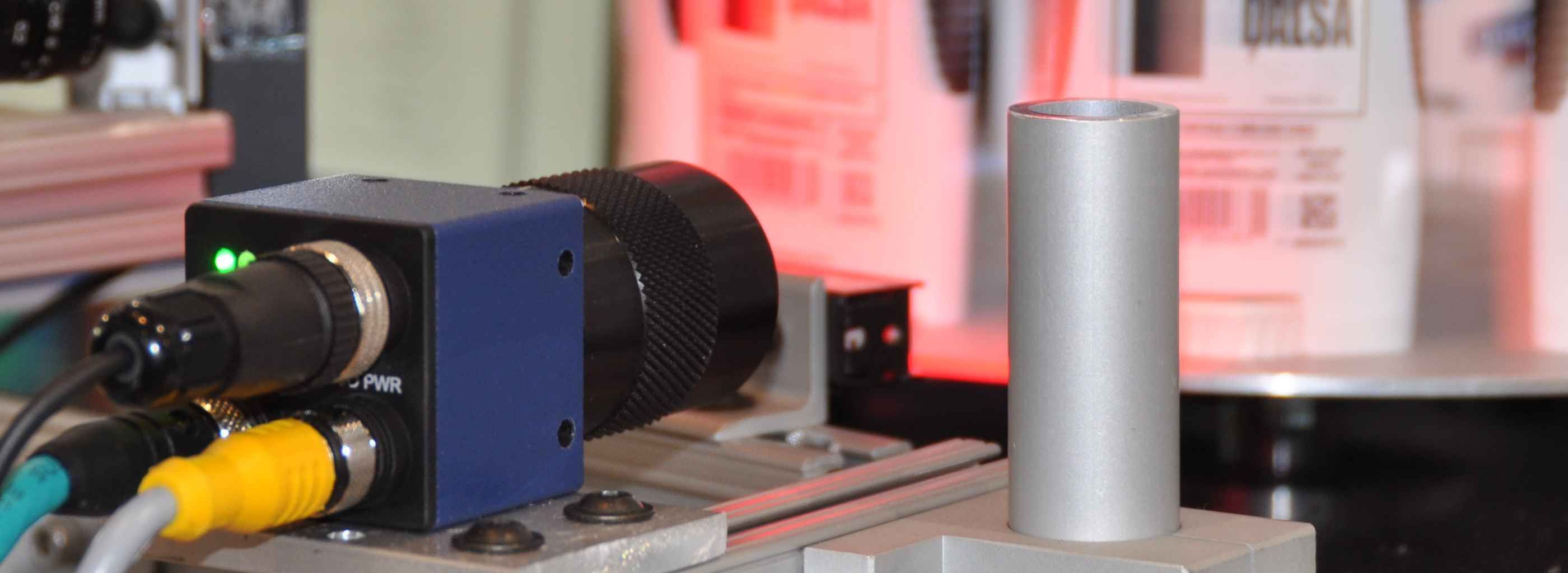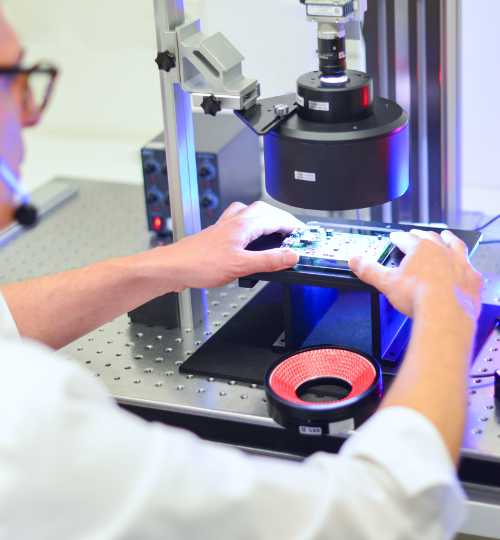





















Selection of the suitable mv system
It doesn't always have to be a simple vision system with a monochrome camera! There is a wide range of image capture methods available today - the possibilities are vast. Moreover, in recent years it has been possible to bring such hardware out of the niche.
Robust, and market-ready solutions have developed. Time-of-flight or stereo cameras, for example, are no longer exotic today. The computing power of embedded platforms, ASICs and DSPs allow cost-effective and increasingly compact designs.
Most applications still use traditional area scan cameras because they can easily capture 2D images without having to move the object or the camera.
Take the picture. Done.
Thanks to the cheaper mass production of special sensors (Sony IMX 487, IMX 990, etc.), it is also becoming cheaper and easier to inspect at other wavelengths.
Monochrome cameras
RGB color cameras
UV cameras
InGaAs cameras for inspections in the SWIR
Thermal imaging cameras

Did you know that the Earth is not flat? A lot of information cannot always be reliably identified and measured using greyscale or colour differences, but only using its 3D properties, i.e. height differences. There are several ways to do this, which will be explained in the following chapters.
Laser triangulation
Strip light projection
Passive & Active Stereo
Confocal Imaging
Light field
Time-of-Flight (TOF)
Shape-from Focus
...

Do you need optical measurement technology that can scan wide webs or (endlessly) long objects?
Line scan cameras build up the image line by line. To obtain a two-dimensional image, you need "movement". Either the object moves linearly under the camera on a conveyor belt etc. or the sensor must be moved over the component (scanning table, robot guide etc.).
Monochrome line scan cameras
Color line scan cameras
Multispectral line scan cameras
InGaAs line scan cameras

Since smartphones have night or portrait mode, the term has become more familiar. Additional information can be obtained by capturing and computing multiple images, usually one after the other or even simultaneously. The best-known 2D computational imaging technique in the industry is "Shape-Form Shading".
Shape-from-Shading
HDR durch Multi-Belichtung
EDOF -Extended depth of field
Depth from Focus
Hellfeld + Dunkelfeld
RGB Super-Resolution

More exotic methods have also found their way into industrial imaging and, after decades of development, now provide reliable and affordable detection options.
Hyperspectral Imaging
Thermal Imaging (passive + active)
X-Ray Imaging
Lidar
Terahertz Imaging
...

As you can see, the options are many, but so are the chances of backing the wrong horse!
To get there safely, define your vision system requirements using a 'requirement specification sheet'.
For more information, see "Planning vision systems" and, of course, the relevant chapters on technology.

Vision-Doctor.com is a private, independent, non-commercial homepage project and not a technology provider or system integrator. Suitable technologies and further professional support can be obtained from the companies & partners listed below.
If necessary, I will be happy to provide a quick recommendation, contacts and brief information.
